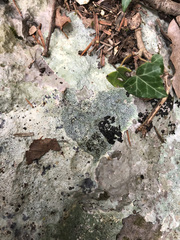Lilac bonnet
Mycena pura
Mycena pura is a species of mushroom widely recognized for its delicate beauty and distinctive characteristics. Commonly known as the lilac bonnet, this species is found in various regions, including the Comunidad Valenciana, where it may go by local names such as vilanos or bonetes lilas.
This particular fungus typically grows in damp, deciduous woodlands, often amidst moss and leaf litter. It thrives in these environments during the cooler months of the year.
- Cap: The cap of Mycena pura is notably lilac or pinkish in color and can range from 2 to 5 centimeters in diameter. It has a convex shape that flattens out with age, often developing a slightly depressed center.
- Gills: The gills beneath the cap are white or slightly tinged with pink. They are adnate to adnexed, meaning they are slightly attached to the stem.
- Stem: This fungus features a slender and fragile stem, which is typically the same lilac color as the cap but can have a more whitish base.
- Odor: One of the distinguishing features of Mycena pura is its strong, distinctive odor, reminiscent of radishes or iodine.
- Spore Print: The spore print is white, which is a common trait among many Mycena species.
While it may be tempting to admire the beauty of Mycena pura, it is essential to note that this mushroom contains traces of muscarine, a toxic compound. Therefore, the consumption of this species is not recommended. For those exploring the natural beauty and biodiversity of the Comunidad Valenciana, Mycena pura represents both a fascinating and cautionary example of the region's rich mycological heritage.






